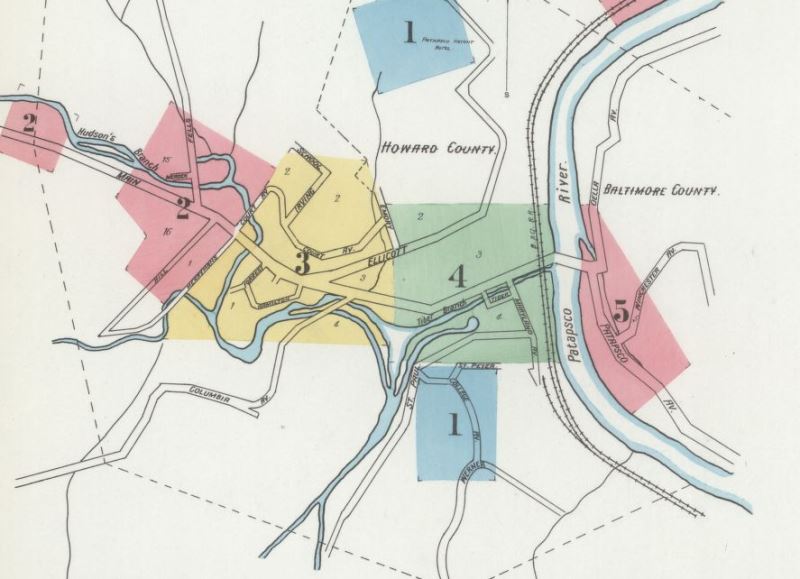Preservation Maryland has released the findings of an independent third-party review of Howard County’s engineering reports that are the basis for the plan to demolish nearly two dozen buildings in historic Ellicott City.
The third-party analysis, which was conducted by the nationally recognized engineering firm of Simpson Gumpertz & Heger, Inc. (SGH), reviewed relevant reports generated by Howard County, including the McCormick Taylor Hydrology and Hydraulics Report and Howard County’s recently released five-year flood reduction plan. Additionally, in order to provide an unbiased approach, Preservation Maryland requested that SGH review the organization’s own recently released alternatives report.
Read the Executive Summary of the Report
Funding for the report was provided, in part, by a generous grant from the National Trust for Historic Preservation. Rob Nieweg, Senior Field Director & Attorney, for the Trust explained that, “The 2018 Flood Mitigation Plan carries irrevocable consequences for Ellicott City’s historic fabric for limited improvement in stormwater runoff. Ellicott City has an opportunity to become a national model for protecting both human life and irreplaceable historic character. We urge the Howard County Council to expand the scope of their due diligence per the engineering study’s recommendations and to strongly explore alternatives to demolition.”
In concluding their review and report, SGH explained that, “…we believe that flood-mitigation strategies which address both life safety concerns and preservation of the historic character of Ellicott City have not been fully vetted by Howard County.”
In particular, SGH highlighted several areas that, in their professional opinion, should be explored further. In part, SGHs recommendations included:
- Updating modeling utilizing the 2018 flood data – only 2016 flood data was utilized by the county to support its demolition plan.
- A full study of tunnel boring and costs associated with this approach. In order to have a viable cost-benefit analysis, costs to construct the tunnels should be fully understood.
- A reassessment of stormwater management impacts at the local level – the existing studies consider impacts at the macro level and localized impacts of mitigation are not fully understood.
- Review and study of mitigation strategies and conveyance improvements in combination with Open First-Floor of historic structures on lower Main Street. The county pursued an all-or-nothing approach, but there could be a variety of options including both demolition and stormwater mitigation, conveyance and retention.
- Development of a cost/benefit comparison of demolition versus Open First-Floor concept for the buildings at Lower Main Street to accompany the proposed mitigation report revision.
- Study and initiation of a program to structurally reinforce and wet floodproof historic buildings in the floodplain.
The findings of this report validated the concerns of many Howard County residents who feel the existing studies do not adequately consider alternatives to demolition and present an all-or-nothing approach.
“Before you make any irreversible decision, it’s just common sense to obtain a second opinion. SGHs third-party review is the second opinion everyone was looking for – and it suggests what we expected – that this rushed plan was not fully vetted. We expect this report will significantly change the conversation moving forward, and we look forward to working with Howard County to answer the serious questions posed in this review and to fully explore the alternatives to demolition which are supported by 74 percent of Howard County voters.” – Nicholas A. Redding, Executive Director, Preservation Maryland
Read the Full Engineering Report
Support Preservation Maryland’s Advocacy Fund to Fight This Demolition Plan

